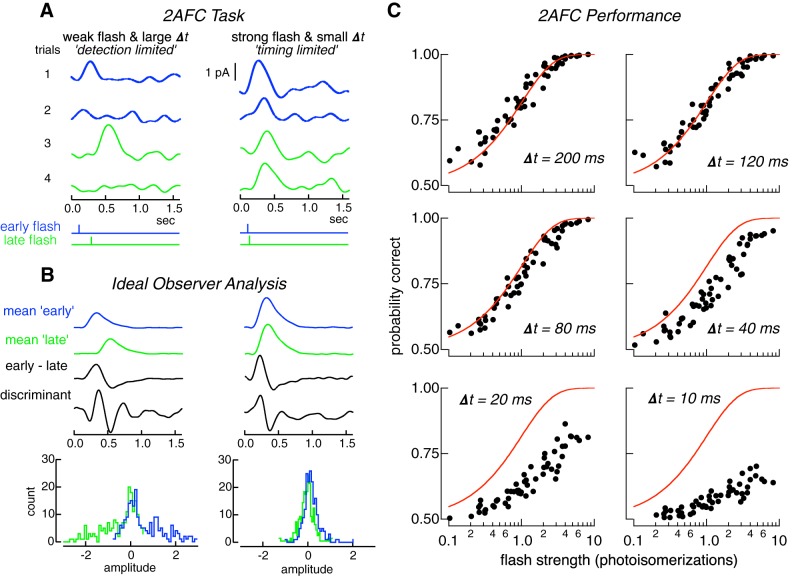Fig. 1.
Two-alternative forced-choice (2AFC) task quantifies the detection sensitivity and temporal resolution of rod responses. A: illustration of 2AFC task. Left: detection-limited regime of the task. Four responses to a flash producing 0.5 photoisomerizations (Rh*) on average. The flash was delivered at either the early (blue) or late (green) time, separated by 200 ms (bottom stimulus traces). On trials 2 and 4 no response is apparent; on trials 1 and 3 the response clearly identifies the stimulus as “early” or “late.” Right: timing-limited regime of task. Four responses to a flash producing 3 Rh* on average and a time offset of 10 ms. Responses are evident on every trial, but the small time offset, and the response variability make classification difficult. B: construction of Fisher’s discriminant used to classify responses. Blue and green show mean responses to early and late flash times, for detection (left) and timing (right) limited regimes. “Early-late” show difference of the “mean early” and “mean late” responses. Discriminant is Fisher’s linear discriminant (see materials and methods). Bottom histograms are distributions of inner products between individual trials (A) and the discriminant. Trials to the right (left) of zero would be classified as early (late) flashes. C: performance in 2AFC task as a function of flash strength (x-axis in each panel) and time offset Δt. Each panel plots probability correct discrimination from 14 rods against flash strength for a Δt. Red lines are performance of an ideal photon detector (Eq. 5), which is limited only by Poisson variability in photon absorption.

